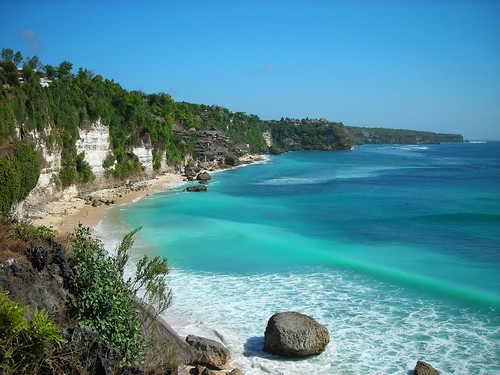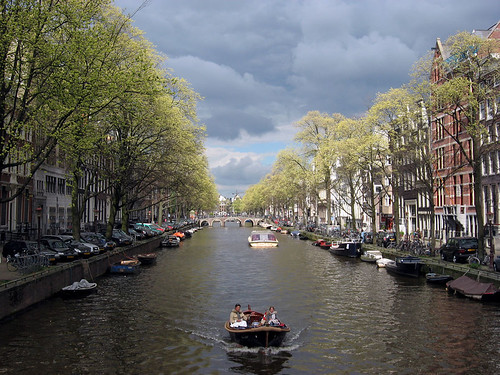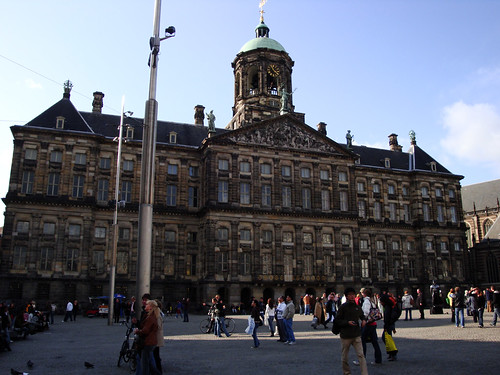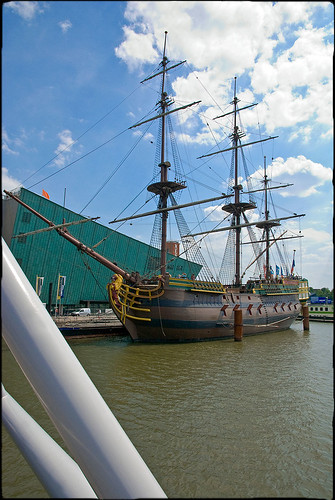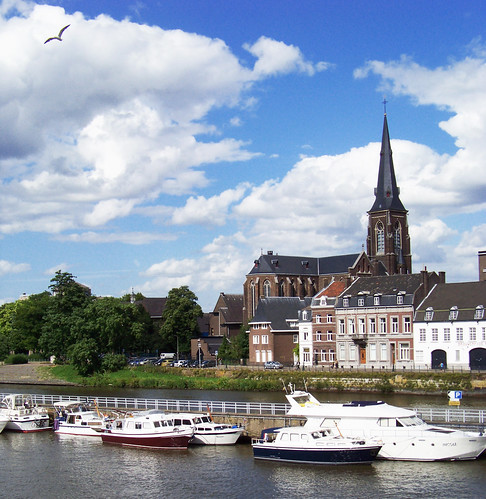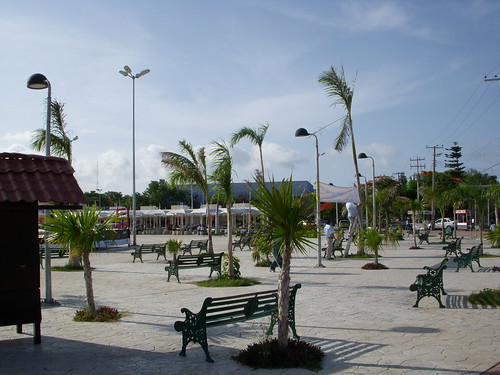
Yunnan is a province of the People's Republic of China, located in the far southwest of the country spanning approximately 394,000 square kilometers (152,000 square miles). The capital of the province is Kunming. The province borders Myanmar (Burma), Laos, and Vietnam.
Yunnan is situated in a mountainous area, with high elevations in the northwest and low elevations in the southeast. Most of the population lives in the eastern part of the province. In the west, the relative height from mountain peaks to river valleys can be as much as 3,000 m. Yunnan is rich in natural resources and has the largest diversity of plant life in China.
Butterfly Spring
Travel some 27 kilometers south of Dali and you will come to a popular beauty spot known locally as the "Butterfly Spring". Situated at the foot of Mount Shenmo, the first of the peaks of Mount Cangshan the spring rises to form a square shaped pool that is shaded by the dense foliage that lines its banks. The pool is some 50 square meters overall and above it is an ancient decumbent tree. This is the famous "Butterfly Tree", so called as in the short interval as spring turns to summer, its fragrant blossom attracts thousands of butterflies. These small multi-colored creatures fly around the pool and settle on the tree in great clusters as they sip the nectar from its blooms. The vast numbers of butterflies are hardly distinguishable from the flowers as the whole tree pulsates with every color of the rainbow. This spectacular sight has given rise to a local festival when the Bai people gather at the tree on April 15th for the "Butterfly Meet". The romantic spectacle of the butterflies as they feed and mate in such abundance has become a symbol of courtship and each Bai youth will seek to engage with the love of his life by joining in with the traditional antiphonal singing. The Bai also refer to the spring as the "Allegiance Spring" as it is here that true and lasting love may be found.
Cangshan Mountain
Cangshan Mountain, two km west of Dali, form the backdrop for Dali City. Together with Erhai Lake, the imposing mountain range makes Dali a true vacation getaway. The stunningly beautiful mountainboasts high snow capped peaks, shifting clouds, and babbling streams. With an average height of 4000 m, it has a cluster of 19 soaring peaks. The highest peak, Malong, spires 4,122 m high. On Shengying peak, there is a huge chess board covering 460 square metres! Streams trickle down between every two peaks. With thick forest and vegetation, the mountain also boasts a botanical garden and a zoo.
Dry Sea
Dry Sea is a vast meadow with an altitude of 3,100 meters (10,171 feet). Just as its name implies, it had been a highland glacial lake before the 1940s and was formed after the water had dried up. Dry Sea is located at the east foot of Jade Dragon Snow Mountain and is only 25 kilometers (15.5 miles) away from Lijiang Old Town.
Surrounded on all three sides by the superb mountains, Dry Sea is the closest and also the best place to get a panorama of Jade Dragon Snow Mountain. The 13 peaks of Jade Dragon Snow Mountain are covered by the undefiled white snow wriggle from the north to the south, like a white jade dragon flying and playing leisurely in the sapphiric sky. The name of the highest peak, Shanzidou (Fan Peak) originates from its shape. From one angle of view, it looks like a gigantic unfolded fan cutting in the clouds.
On the heavily forested Dry Sea, spring is a busy season, for the meadow bursts into colorful blooms and is full of energy. In the sunny days of summer, fantastic green glittering glaciers can be seen clearly through the telescope. It is the flourishing plants all over the mountains that tinge the glaciers with the filmy green. When autumn comes and brings a gentle breeze that kisses the meadow turning the green leaves on the deciduous trees into bright yellow, orange, and scarlet. In winter, the pure snow covers this world making the meadow and the mountains show a kind of holy beauty. Dry Sea is an abundant pasture and views of local herders who intersperse their groups of grazing livestock (including the cattle, the goats, the sheep and the domesticated yaks) are easy to be seen.
Erhai Lake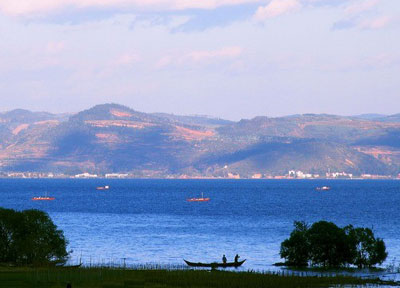
Erhai Lake is the largest highland lake next to Dianchi and one of the seven biggest fresh water lakes in China. It means, "sea shaped like an ear", in Chinese. Implying that the lake is ear shaped and as large as a sea, hence it was so named. The lake covers an area of 250 square kilometers and is located about two kilometers east of Dali. It is like a crescent lying between Cangshan and Dali city as seen from Cangshan Mount. In a sunny day, the crystal waters of Erhai Lake and the snow mantled Cangshan Mount radiate with each other. Thus the scene was commonly described as "Silver Cangshan and Jade Erhai".
Jade Dragon Snow Mountain 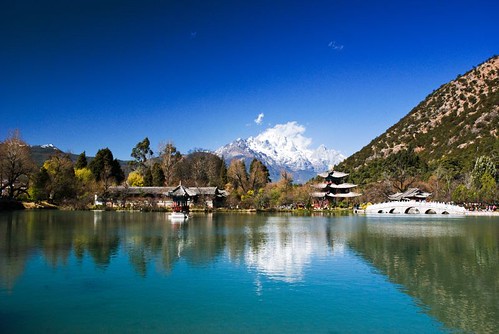
According to the geologists' research, for about 400 million years the area around Jade Dragon Snow Mountain was the ocean and it was during the last 600 thousand years that the different landscapes had come into being because of the uprising of the lithosphere. Archaic legend about this mysterious and beautiful snow mountain goes like this: Once upon a time, Jade Dragon Snow Mountain and Haba Snow Mountain were twins. They had lived on panning in Golden Sand River until one day an evil fiend usurped the river. The brothers were very brave and had a fierce fight with the fiend, Haba died in the fight and Jade Dragon drove off the fiend after wearing out 13 swords. For guarding the people and preventing the return of the fiend, Jade Dragon held the 13 swords in hands day and night. As time passed, the brothers had turned into the two snow mountains, and the 13 swords had become the 13 peaks. Jade Dragon Snow Mountain is a holy mountain for the local Naxi people not only because of the legend, but also because long time ago, it was a place for young lovers to sacrifice their young lives in honor of true love and to escape from the arranged marriages and feudal ethics.
Lijiang Old Town
As a result of the combination of the multinational culture and the progress of Naxi ethnic minority, the buildings in the town incorporate the best parts of the architectural traits of Han, Bai, and Tibet into a unique Naxi style. The layout of the town is free-style and flexible, the houses are close and diverse, and the lanes are narrow and meandering. Naxi people pay much attention to the decoration, the commodious and applied houses are mostly timber and tile structure compound with a garden, each has engraved vivid figures of people and animals on doors and windows, beautiful flowers and trees in the garden.Living in such a beautiful and comfortable environment is a real pleasant thing.
The center of the Old Town is the Square Street (Sifangjie). Four main streets radiate from Square Street and extend to the four different directions. Countless lanes extending in all directions form a network and connect every corner of the town. Streets in the Old Town are paved by the local bluestones which are neither muddy in the rainy season nor dusty in the dry season. The massive and fine-grained stones add a sense of antiquity and mystery to the Old Town. The sluice at the center of town is opened late in the night and the resulting current of water flushes and washes all the streets to keep the town clean. This practical use of water is part of the daily life of the residents in Old Town.
Lugu Lake
Lugu Lake is long and narrow, like a hoof filled with limpid water. Five small forested islands are interspersed across the surface, three of which are in Yunnan precinct. The smallest island is called Lige Island, and there are only eight Mosuo families living on it. Another island, called Chieftain Island, was named because Ayunshan, the chieftain of Yongning Village, had built a villa and lived here until his death in the Guangxu period of the Qing Dynasty. Simultaneously, Joseph Rock, an Austrian writer who was his friend, wrote part of the Ancient Nakhi Kingdom of South-west China (Harvard University Press, 1947) on this island. Liwubi Island, which lies three kilometers (one point nine miles) away from Chieftain Island, is actually a small peninsula extended into the lake by the Holy Gemu Mountain. The mountain is also called Lion Mountain, for it looks like a lion drinking water beside the lake. Mosuo people believe that a beautiful and kind goddess named Gemu lives on the mountain and blesses the residents at all times. A great sacrificial rite is held to worship the goddess on July 25th of each lunar year at the foot of Gemu Mountain.
Stone Forest 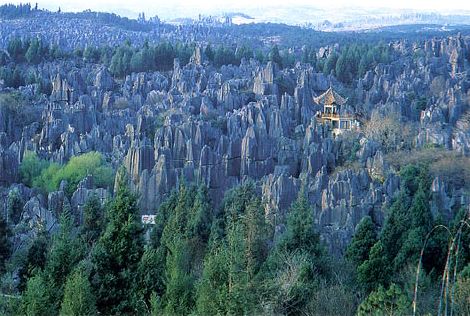
The Stone Forest is in Lunan Yi Nationality Autonomous County, which is about 120 kilometers (75 miles) from Kunming and requires only a three-hour drive. It covers an area of 400 square kilometers (96,000 acres) and includes both large and small stone forests, as well as many other scenic spots. An old local saying says that "If you have visited Kunming without seeing the Stone Forest, you have wasted your time." Truly, the Stone Forest is one of the most important attractions of Yunnan.
Walking through the Stone Forest, visitors marvel at the natural stone masterpieces and are bewitched by the intricate formations. The magnificent, strange and steep landscape creates countless labyrinthine vistas, including:
Stone Forest , all of which feature stones in various formations. Animals, plants, and even human figures can be found here. Some are elegant, some are rugged, and each is lifelike with its own distinguishing characteristics.
 SubteStone Forest rranean Stone Forest in Zhiyun Cave
SubteStone Forest rranean Stone Forest in Zhiyun Cave, an underground stone forest distributed among several caves and occupying a total area of about three square kilometers (720 acres).
Strange Wind Cave, composed of Penfeng Cave, Hongxi Spring and an underground river. From August to November, gales lasting two to three minutes sweep out of the cave every 30 minutes.
Long Lake is a karsts lake that is three kilometers (two miles) long but only 300 meters (zero point two miles) wide. The lake features underwater stalagmites and stalactites and a small island in the center of the water.
The source of the Dadie Waterfall, Ba River, is a branch of Nanpan River. In the rainy season, up to 150 cubic meters (196 cubic yards) of water per square inch plummet down the 88 meter (288 feet) drop.
Tiger Leaping Gorge 
About 100 kilometers (62 miles) northwest of Lijiang Old Town lying between Jade Dragon Snow Mountain (Yulong Xueshan) and Haba Snow Mountain (Haba Xueshan) is Tiger Leaping Gorge (Hutiao Gorge), which is believed to be the deepest gorge in the world. From the top of the gorge you look down the steeply angled (70-90 degrees) mountain sides to the rushing Golden Sands (Jingsha) River with its 18 frothing rapids more than 200 meters (about 700 feet) below.
Naturally divided into three sections, the first section, which is the narrowest and uppermost section, is the mouth of the fast flowing Jingsha River. In the midst of the river's mouth is a large rock that is positioned at the gorge's narrowest section-only 30 meters (33 yards) wide. An ancient legend says that a tiger used this rock as its stepping stone so it could leap across from one side of the gorge to the other, which is how the gorge got its name.
As the river enters the middle section, it drops another 100 meters (330 feet) and its flow rate increases to an amazing speed. Here the thunderous rushing waters slam into sharp, large rocks and crash down into the river forming swirling whirlpools. Can it get more exciting? Yes, it can as the third and lowest section is acclaimed for being the wildest attraction of all!
Meili Snow Mountain
Meili Snow Mountain, also called "Prince Snow Mountain," is located about 10km west of Deqing city in Diqing prefecture, at the confluence of the Jinsha, Lancang and Nu rivers.
In this area, strong updrafts meet with continental cold air masses, forming thick fog and heavy snow. Yet due to vertical climate differences, Meili Mountain also features abundant blooming azaleas and verdant trees, which contrast with the snow-capped peaks, creating a charming scene here.
Meili Snow Mountain has long been famous for its main peak, Kagebo Peak, which, at an elevation of 6,470 meters (21,221 feet) above sea level, is the tallest in Yunnan.
Surrounded by 13 lesser peaks, which are the subject of an enchanting tale, Kagebo Peak is extolled as the "most beautiful mountain in the world." On the southern side of the main peak, a waterfall - known among the local people as "a deluge of rain and God-mandated cascade" - tumbles down from a breathtaking height of 1,000 meters (3,280 feet).
Under Kagebo Peak, low-altitude modern glaciers can be found, which are of particular interest to those engaged in geological research. Mingyongqia Glacier and Siqia Glacier stretch down to the forest at an elevation of 2,700 meters (8856 feet), only 800 meters (2624 feet) from the surface of Lancang River. It is an eternal modern monsoon maritime glacier with low latitude and high altitude.
Three Pagodas
Many sculptures of Buddha made of gold, silver, wood or crystal, Buddhist readings, and more than 600 various medicinal ingredients were found in Qianxun Pagoda, playing an important role in explaining the ancient history of Dali City. Study of Three Pagodas and the cultural relics that have been excavated at the site provide significant data for exploring the history, religion, and art of the area. Today, travelers can visit Three Pagodas at night, when it is illuminated providing a fantastic scene. Nearby on the 'marble street' there are many folk-craft workshops and stands specializing in marble and brick-painting.
Known for its resilience, Three Pagodas has survived several eras of severe earthquakes. The local government still makes a great effort to strengthen it to make it as strong as when it was built to ensure the preservation of this architectural treasure.
TransportationsRailwaysYunnan was first connected by railway not to the rest of China, but to the Vietnamese port of Haiphong by a French engineered narrow gauge railway, the Sino-Vietnamese Railway completed in 1910. It took another fifty years for the province to be connected by rail to the rest of China with the completion of the Chengdu-Kunming line. Later a line connecting Kunming to Guiyang followed. Two further lines have been added recently: a southern line connecting to Nanning and a north-eastern line connecting to Sichuan via Yibin.
An extension now also links Kunming to Dali, with the stretch to Lijiang nearing completion. Plans are underway on extending the old line to Vietnam, while a new and very ambitious plan to link from Dali to Ruili has been announced in 2006. Another plan to extend the railway line from Kunming all the way to Singapore, with connections to the other South East Asian countries, will be opened in 2017.
Road and railroad traffic has been recently improved, and Kunming is now a transportation center; an important railroad runs from Kunming to Hanoi, Vietnam, while transportation to Myanmar is maintained by the Burma Road.
Burma RoadThe Burma Road was a highway extending about 1,126 km (700 mi) through mountainous terrain from Lashio, northeast Burma northeastward to Kunming, China. Undertaken by the Chinese after the start of the Sino-Japanese War in 1937 and completed in 1938, it was a vital transportation route for wartime supplies to the Chinese government from Rangoon and shipped by railroad to Lashio from 1938 to 1946. An extension runs east through China from Kunming, then north to Chongqing. This traffic increased in importance to China after the Japanese took effective control of the Chinese coast and of Indochina. It was seized by the Japanese in 1942 and reopened when it was connected to the Stilwell Road from India. The Ledo Road (later called the Stilwell Road) from Ledo, India, into Myanmar was begun in December 1942. In 1944 the Ledo Road reached Myitkyina and was joined to the Burma Road. Both roads have lost their former importance and are in a state of disrepair. The Burma Road's importance diminished after World War II, but it has remained a link in a 3,400-km road system from Yangon, Myanmar, to Chongqing.
HighwaysRoad construction in Yunnan continues unabated: over the last years the province has added more new roads than any other province. Today expressways link Kunming through Dali to Baoshan, Kunming to Mojiang (on the way to Jinghong), Kunming to Qujing, Kunming to Shilin (Stone Forest). The official plan is to connect all major towns and neighbouring capitals with expressways by 2010, and to complete a high-speed road network by 2020.
All county towns are now accessible by paved, all-weather roads from Kunming, all townships have a road connection (the last to be connected was Yangla, in the far north, but Dulongjiang remains cut off for about six months every year), and about half of all villages have road access.
Second-level national highways stretch 958 km, third-level highways, 7,571 km and fourth-level highways, 52,248 km. The province has formed a network of communication lines radiating from Kunming to Sichuan and Guizhou provinces and Guangxi and Tibet autonomous regions, and further on to Myanmar, Laos, Vietnam and Thailand.
Luofu ExpresswayAfter the opening of the Suolongsi to Pingyuanjie expressway, Luofu expressway, the first between Yunnan and Guangxi Province, opened on October 2007. It has made material and passenger transportation between the two provinces much more convenient. Moreover, Luofu Expressway has also become the main road from Yunnan to Guangxi and the coastal ports. Luofu Expressway begins from the crossroads of Luo Village between Yunnan and Guangxi Provinces and ends at Funing County of Wenshan State. The total length of the expressway is 79.3 kilometers which has shortened the commute between Yunnan and Guangxi from the previous 3 and half hours to just 50 minutes.
WaterwaysGenerally, rivers are obstacles to transport in Yunnan. Only very small parts of Yunnan's river systems are navigable. However, China is constructing a series of dams on the Mekong to develop it as a waterway and source of power; the first was completed at Manwan in 1993.
In 1995, the province put an investment of 171 million yuan to add another 807 km of navigation lines. It built two wharfs with an annual handling capacity of 300,000 to 400,000 tons each and four wharfs with an annual handling capacity of 100,000 tons each. The annual volume of goods transported was two million tons and that of passengers transported, two million.
AirportsThe Wujiaba Airport in Kunming is a national first-class airport and the other airports are second-class terminals. A new airport for Kunming, build east of the city, at Dabanqiao began construction in 2006, but is not expected to be completed until 2015.
